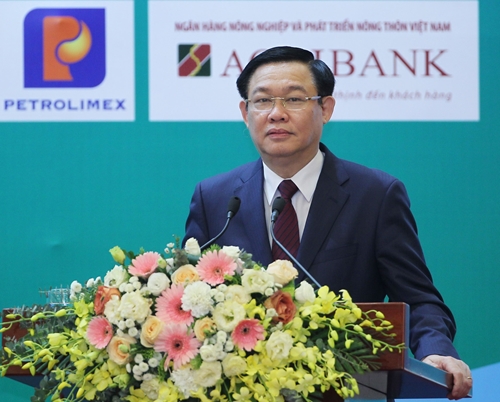The official further said trade protectionism is now on the rise and seriously threatening the process of trade liberalisation and global economic integration.
The wider and deeper integration into the global economy means Vietnam will face with more impact from regional and global economic development trends, and that is why the country needs a proactive and flexible approach to cope with this issue, he added.
    |
 |
|
Deputy Prime Minister Vuong Dinh Hue |
Sudhir Shetty, Chief Economist for the East Asia and Pacific Region of the World Bank, said Vietnam should enhance its macroeconomic response to international financial and trade turbulences while strengthening national competitiveness with trade facilitation policies, improving the business environment, and strengthening the connectivity between foreign investment and domestic suppliers.
Furthermore, Vietnam also needs extensive reform of trade and investment, including the simplification of non-tariff measures that distort trade as well as promote trade in services, deepen regional and global integration, and increase commitments to supporting the reform of the global trading system.
Over the past time, Vietnam has made progress in preparing for the new-generation free trade agreements (FTAs), including the Comprehensive and Progressive Agreement for Trans-Pacific Partnership (CPTPP) which was signed in March and ratified by the National Assembly in November to come into force in January 2019.
Vietnam and the European Union announced the conclusion of the legal revision of the EU-Vietnam Free Trade Agreement (EVFTA) and agreed to keep the Investment Protection Agreement (IPA) separate from the FTA in June in preparation for the signing of the deal.
Vietnam has achieved certain outcomes in international economic integration, contributing to the national socio-economic development. The total import-export turnover in 2018 is estimated at 475 billion USD, of which exports are expected to reach 239 billion USD, a year-on-year rise of 11.2 percent.
The country also sought to increase goods exports to traditional markets and find new ones. Exports to countries having FTAs with Vietnam in 2018 have seen high growth compared to 2017 with preferential rates reaching about 40 percent, a surge from 35 percent in previous years, indicating that Vietnamese firms are increasingly focusing on optimising opportunities from the implementation of free trade deals.
Source: VNA